Trump's border 'wall' is getting 57 miles longer — and the national emergency end game is in sight
This post has been updated.
In the latest battle for security on the southern border, President Donald Trump has threatened to impose tariffs on Mexican imports.
Using the International Emergency Economic Powers Act (IEEPA), Trump hopes to impose a 5% tariff on Mexican imports by June 10, unless the Mexican government stops Central American migrants crossing its territory to reach the U.S.
“Mexico must step up and help solve this problem,” Trump said in a statement on Thursday. “If Mexico fails to act, tariffs will remain at the high level, and companies located in Mexico may start moving back to the United States to make their products and goods.”
He added that if the administration sees Mexican actions as insufficient, it would result in tariffs being raised to 10% on July 1, which will continue rising in 5 point increments at the start of each subsequent month, until it reaches 25% by October 1.
“If these tariffs go up to 25%, it would be a disaster for both Mexico — you’d see the Mexican economy fall into recession — and likely the United States as well,” Mexico Institute Deputy Director Christopher Wilson told Yahoo Finance’s On The Move. “You have to remember that half of U.S.-Mexico trade is trade in inputs, and parts and materials, so we put a 5% tax and up to a 25% tax… half of that’s going to be shouldered by U.S. consumers… and the other half’s going to be shouldered by U.S. producers, manufacturers.”
“This is a radical and disturbing development,” billionaire and former New York City Mayor Michael Bloomberg wrote in an op-ed. “The problems at the border are real — but they’re partly this administration’s fault… [Trump] has resorted to draconian methods that have only brought more misery to the most vulnerable while failing to remedy the situation.“
Judge blocks Trump from using Pentagon funds to build wall
The Trump administration’s plans to move forward on construction for the border wall without congressional approval had already come to a halt on May 24 after a federal judge blocked them from using the funds.
In the decision, the judge wrote: “Congress’s ‘absolute’ control over federal expenditures — even when that control may frustrate the desires of the Executive Branch regarding initiatives it views as important — is not a bug in our constitutional system. It is a feature of that system, and an essential one.”
This came after Acting Defense Secretary Patrick Shanahan approved a plan in March 2019 for the Pentagon to transfer $1 billion towards the construction of 57 miles of new border fencing championed by U.S. President Donald Trump.
Speaking to the House Armed Services Committee, Shanahan cited U.S. Code § 2808 — Construction authority in the event of a declaration of war or national emergency — to justify the move.
The Armed Services Committee rejected the request, though the Department of Defense (DoD) insists that it has the authority to transfer the funds anyway.
"DoD is attempting to circumvent Congress and the American people's opposition to using taxpayer money for the construction of an unnecessary wall, and the military is paying the cost," Adam Smith (D-Wash.), the committee's chairman, said in a statement.
The Trump administration is still searching for ways to come up with the money to fund the completion of the border wall. Earlier in the month, the Washington Post reported that the Pentagon will shift $1.5 billion for the wall “from programs that include a nuclear intercontinental ballistic missile system and a plane that provides surveillance and communications to fighter jets while airborne.”
But on May 21, the House Appropriations Committee passed its fiscal 2020 defense spending bill, which entailed $8 billion less what the Trump administration requested for the border wall.
‘Major disconnect between the White House and Congress’
Trump’s demand for a border wall led to a 35-day shutdown from Dec. 22 to Jan. 25 and an ongoing national emergency that the president declared on Feb. 15. On March 14, the Republican-controlled Senate voted to overturn the emergency declaration, forcing Trump use his veto power for the first time.
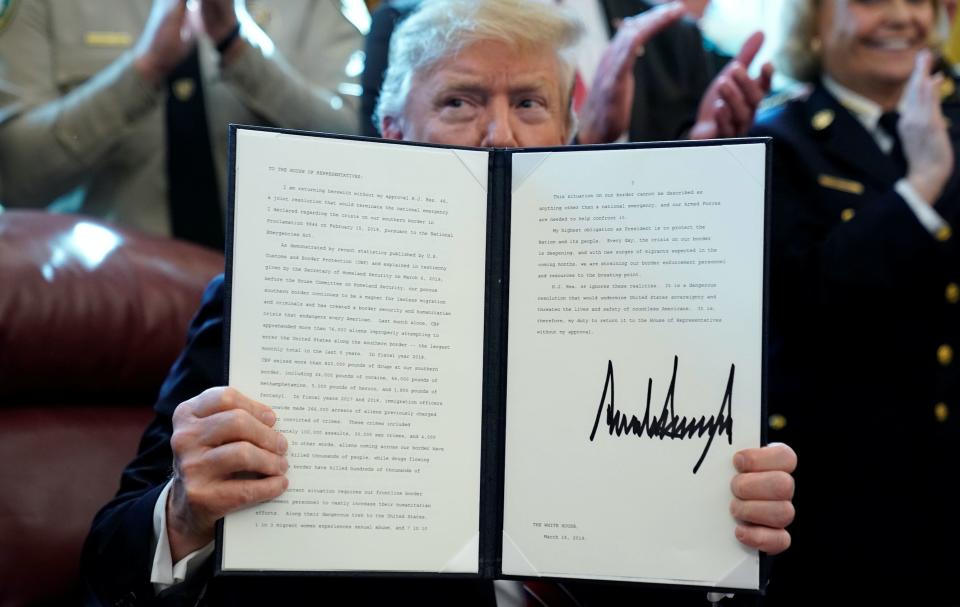
“Clearly, there is still a major disconnect between the White House and Congress,” Vanda Felbab-Brown, a senior fellow at Brookings Institution, told Yahoo Finance in a phone interview. “The White House is just plowing away with policies that Congress clearly indicated are undesirable.”
The Pentagon plan involves diverting military funds for “18-foot-high pedestrian fencing, constructing and improving roads, and installing lighting within the Yuma and El Paso Sectors of the border,” according to a letter from Shanahan to Secretary of Homeland Security Kirstjen Nielsen.
The move indicates that Trump is moving forward with the national emergency to build fencing and other barriers that would effectively serve as a “wall” on America’s southern border.
“The national emergency was always a bogus justification,” said Felbab-Brown, who has written extensively on border wall issues. She also argued that using Pentagon funds “is enormously problematic, if not outright illegal, including because there’s no real emergency to justify that.”
‘Our objectives have not changed’
In 2016, then-candidate Trump asserted that his wall “is going to be a real wall, it’s going to be a high wall, it’s going to be a beautiful wall,” and it would cost “maybe $10 or $12 million dollars.” He also promised that "Mexico will pay for the wall - 100%!”
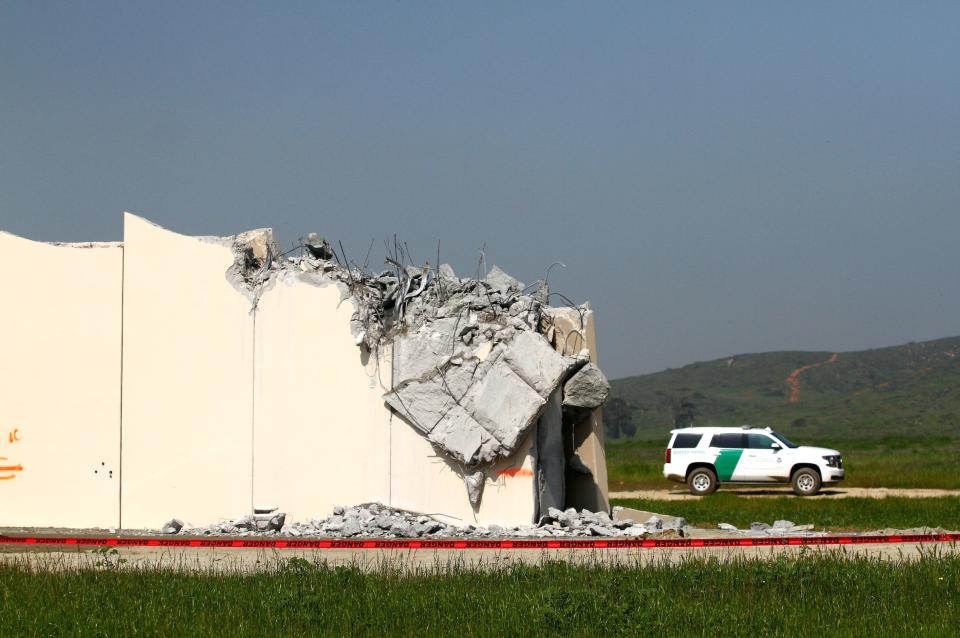
In reality, President Trump’s wall is not a wall at all — the eight concrete and steel wall prototypes were demolished — but instead an extension of the barriers erected by previous presidents at a cost of billions of taxpayer dollars.
If all planned construction goes forward, according to a Yahoo Finance analysis, the CBP would be 80% to its March 2018 goal: “When fully funded, about 1,000 of almost 2,000 of the U.S. border with Mexico will have border wall and other critical infrastructure."
Asked if the new construction is part of that plan, a CBP official told Yahoo Finance that “our objectives have not changed.”
Trump’s march to 1,000 miles
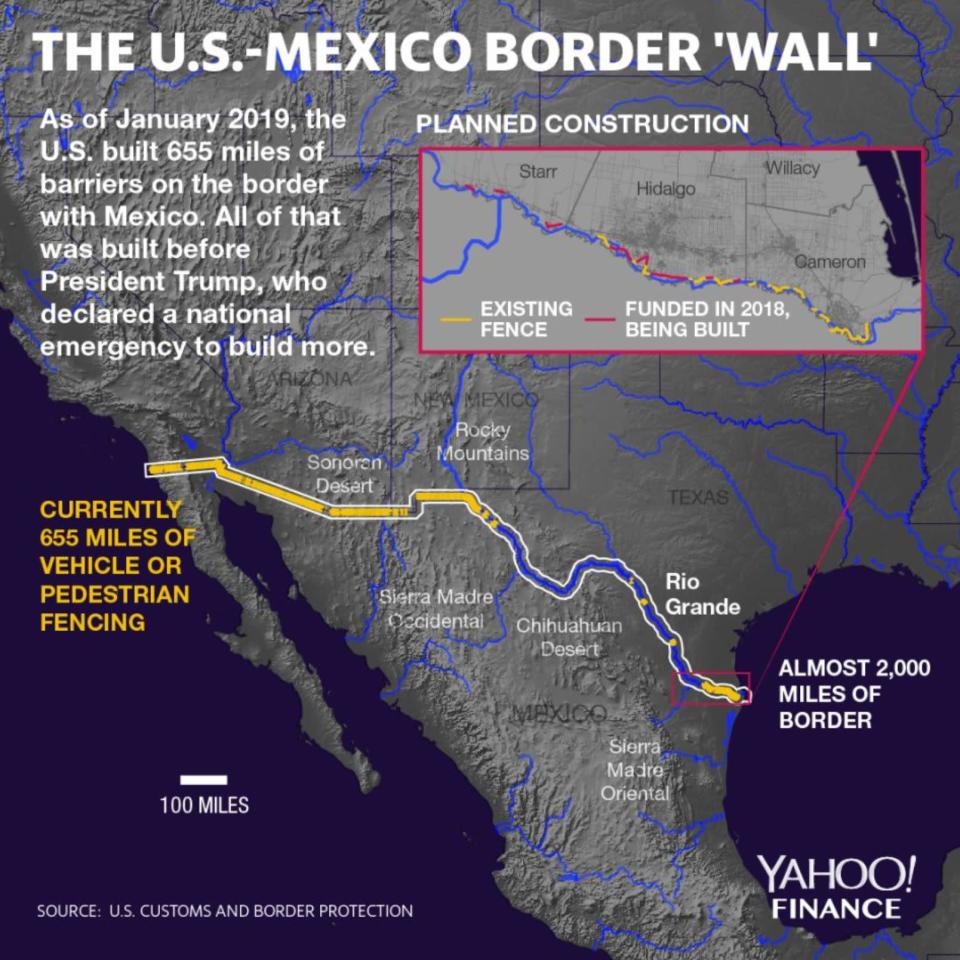
There are currently 655 miles of border barriers on the nearly 2,000-mile long U.S.-Mexico border, according to U.S. Customs and Border Protection (CBP), all of which were built before Trump took office.
On top of the existing 655 miles, Congress passed a $1.3 trillion spending bill in March 2018 that included $1.57 billion for border fencing and related costs covering 33 miles of new fencing (as well as the replacement of some old fencing as well as secondary fencing). That construction recently began around Mission, Texas, bringing the total estimated length of barriers to 688 miles.
Then, after a 35-day partial government shutdown, Congress approved an additional $1.4 billion for border building that would cover 55 miles of new fencing and bring the total to 743 miles.
The additional 57 miles of border fencing approved by Shanahan brings the total amount of existing and planned border to exactly 800 miles.
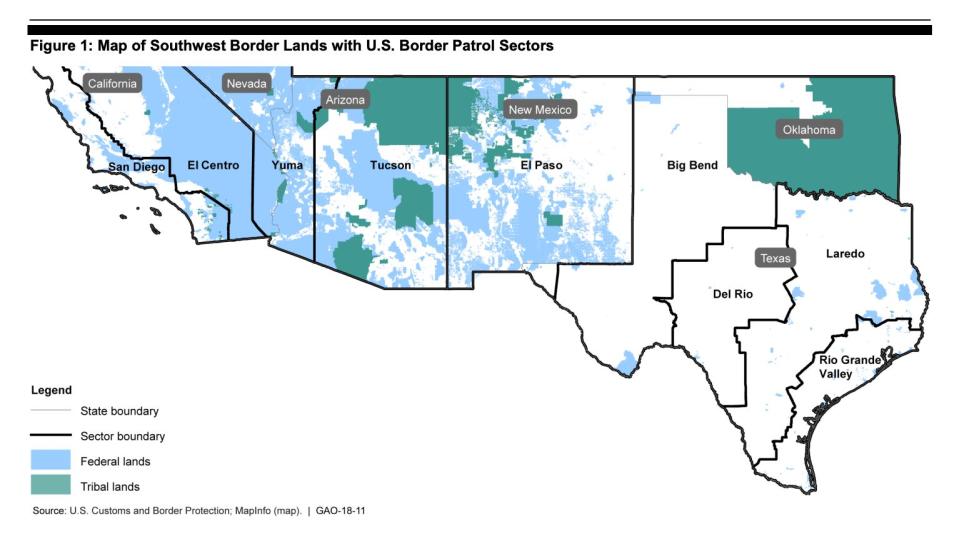
Standing on the shoulders of previous presidents
Trump is aggressively pursuing policies followed by the last three presidential administrations.
In 1993, then-President Bill Clinton approved Operations Safeguard and Hold the Line, “which authorized the construction of fencing along the border in Arizona and Texas respectively.”
Through Operation Gatekeeper, permission was given “for the construction of fencing along the border in California.” CPB asserted that the subsequent Operation Gatekeeper “reduced illegal entries in San Diego by more than 75% over the next few years.”
During George W. Bush’s administration, Bush established the Secure Fence Act in 2006. This called for 700 miles of at least two layers of reinforced fencing on the border, in addition to “the installation of additional physical barriers, roads, lighting, cameras and sensors” in California, Arizona, New Mexico, and Texas.

Bush also passed the bipartisan Real ID Act which gave “vast and arbitrary powers to the Department of Homeland Security … and total discretion in waiving any U.S. laws that stand in the way of wall and barrier construction along the southern border.”
Once Barack Obama took office in 2009, his administration contributed to the project by cutting some costs, and eliminating the “virtual fence” along the Mexican border that used technology such as video cameras, sensors, and radars to patrol the border. The system had cost nearly $1 billion but covered only 53 miles in Arizona.
Instead, the DHS began using “commercially available surveillance systems, unmanned aerial drones, thermal imaging, and other equipment.” The DHS projected that it would cost the country a lot less — under $750 million — to cover the remaining parts of the Arizona border, which was roughly 323 miles.
President Trump reverted back to the focus on physical structures, publicly demanding an actual wall while following a policy of building more fencing.
How Trump could declare ‘victory’ on the ‘wall’
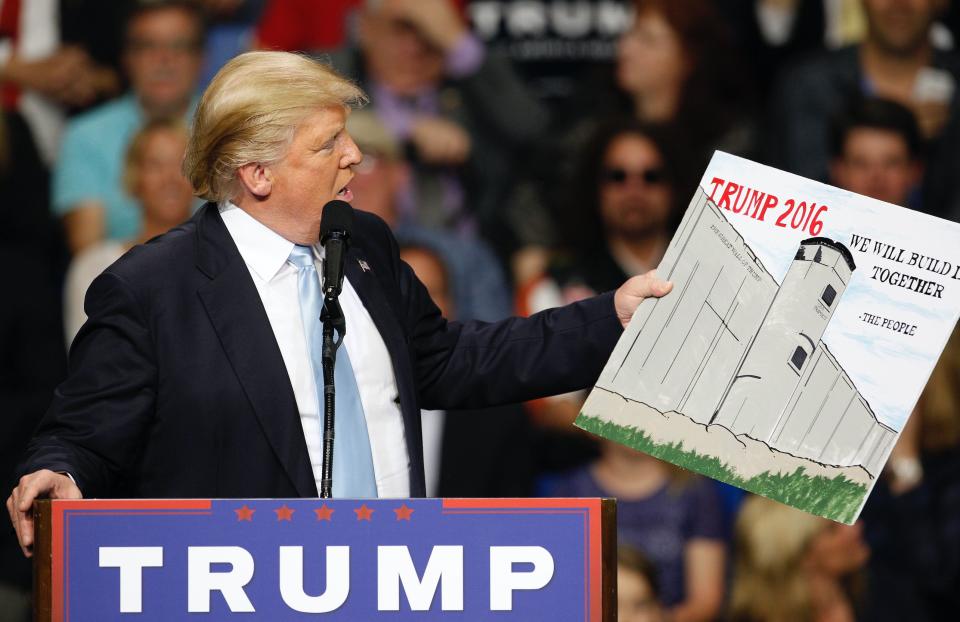
Trump’s national emergency declaration unlocked roughly $6.6 billion in additional funding, which includes $3.5 billion re-allocated from the Department of Defense’s (DoD) military construction projects, $2.5 billion from the DoD’s counterdrug fund — which is where the latest money comes from — and then $600 million from a Treasury Department fund.
And so, with additional announcements like Shanahan’s, the Trump administration could feasibly fund the extension of border fencing to meet CPB’s goal of about 1,000 miles of “border wall and other critical infrastructure."
In this way, by extending the work of previous presidents and using a national emergency to hammer through the rest of the border building, Trump could declare that he fulfilled his signature campaign promise of constructing a “wall.”
Michael B. Kelley contributed to this post.
READ MORE:
Former DEA agent: Trump's wall will 'have very little effect on the flow of drugs'
Analyst: President Trump 'is going to go to Plan B' for a border wall
National emergency: How Trump's 'wall' could actually be built after his 'VETO!'
Follow Yahoo Finance on Twitter, Facebook, Instagram, Flipboard, LinkedIn, YouTube, and reddit.

